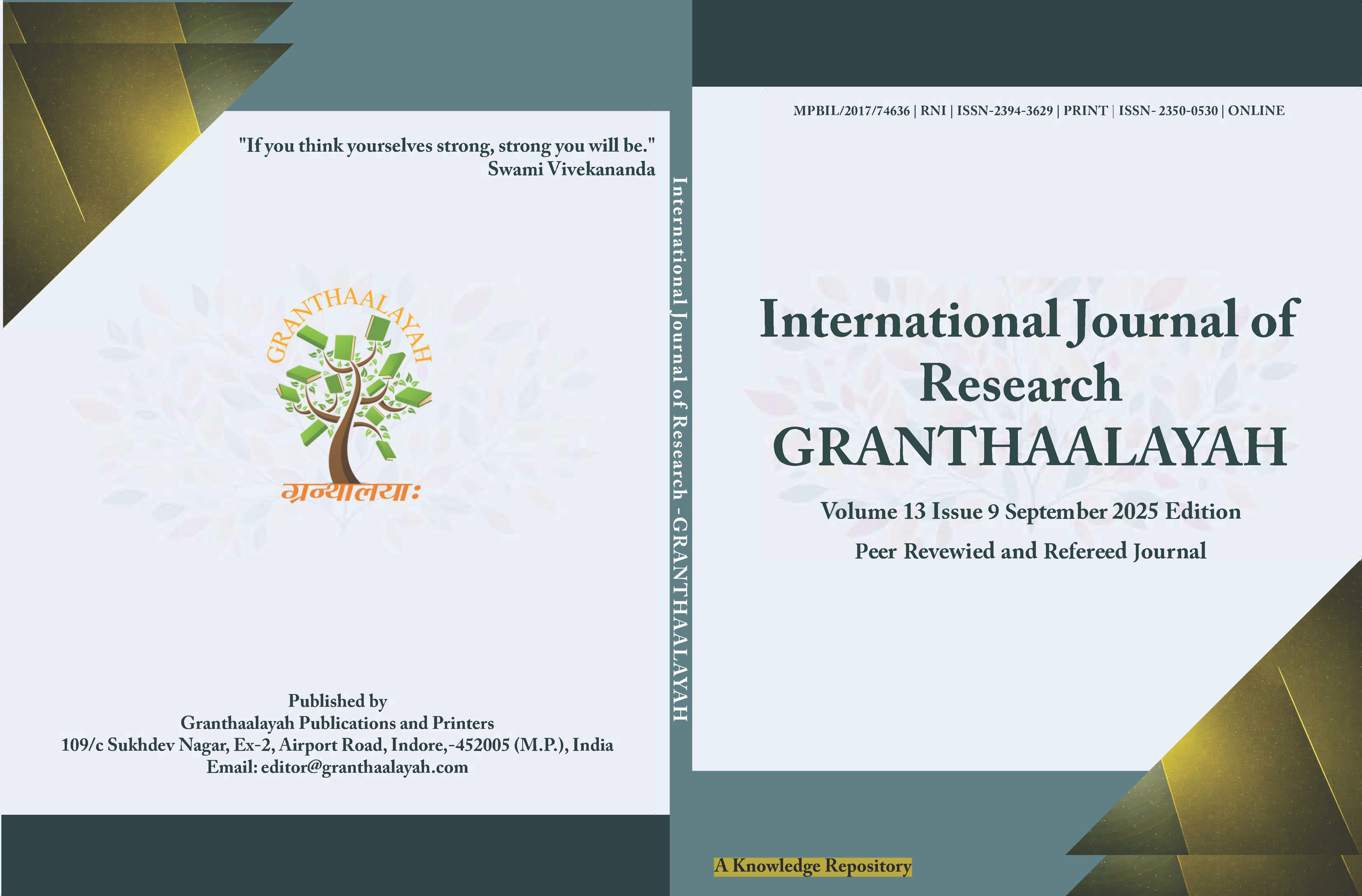IMPACT OF BACTERIAL KERATITIS ON OUTPUT CARE HOSPITAL IN BANGLADESH
DOI:
https://doi.org/10.29121/granthaalayah.v13.i9.2025.6340Keywords:
Bacterial Keratitis, Predisposing Factors, Clinical Profile, Bacteriological ProfileAbstract [English]
Background Bacterial keratitis is a potentially fatal corneal infection worldwide. Its deleterious effects include sudden and rapid destruction of the cornea. The exact cause is still unknown to health authorities and ophthalmologists. Various studies have suggested different theories. Some studies have suggested that the spectrum of bacterial corneal pathogens is largely influenced by local microbial flora, geography, and climatic factors.
Aims and Objectives The aim of this study is to determine the bacteriological patterns and predisposing factors of bacterial keratitis in outpatient settings.
Methods A total of 45 male and female patients with bacterial keratitis were evaluated from January 2015 to December 2016 at the Department of Ophthalmology, MAG Osmani Medical College Hospital, Sylhet, a divisional city of Bangladesh. The study recorded the patients' socio-demographic information, pre-existing factors, and clinical presentation. Bacterial cultures were performed from corneal swabs in the laboratory.
Results The age range of most patients was between 41 and 60 years (55.6%). The mean age of bacterial keratitis was 47.60 ± 17.14 (range, 18–71) years. The study showed that the male to female ratio was 1.25:1, which was close to 1. The study also showed that common predisposing factors were 62.2% trauma and 31.1% chronic dacryocystitis. The highest 57.8% Gram-positive bacteria predominated, and the lowest 42.2% Gram-negative bacteria. Out of the total isolates, 37.8% were Staphylococcus epidermidis, 26.7% Pseudomonas aeruginosa, 20.0% Staphylococcus aureus, 8.9% Escherichia coli, and 6.7% Klebsiella species.
Conclusion The study concluded that trauma is the most important predisposing factor in bacterial keratitis. Gram-positive bacteria are the main isolates and common bacteria are Staphylococcus epidermidis, Pseudomonas aeruginosa and Staphylococcus aureus. This study suggests a new dynamic alternative approach to the upcoming eye care pathway to promote global eye protection related to advanced sensor technology and national health policies, which is aligned with the Sustainable Development Goals 2030.
Downloads
Published
How to Cite
Issue
Section
License
Copyright (c) 2025 Md Rahimullah Miah, Mohammed Selim Reza, Md Nazmul Islam, Jafrin Sultana Silvy, Nizam Jamil Hussain, Jorin Tasnim Parisha, Azima Aktar Jhuma, Md Altaf Hossain, Md Harunur Rashid, Shahriar Hussain Chowdhury

This work is licensed under a Creative Commons Attribution 4.0 International License.
With the licence CC-BY, authors retain the copyright, allowing anyone to download, reuse, re-print, modify, distribute, and/or copy their contribution. The work must be properly attributed to its author.
It is not necessary to ask for further permission from the author or journal board.
This journal provides immediate open access to its content on the principle that making research freely available to the public supports a greater global exchange of knowledge.






























